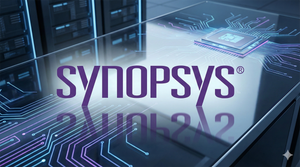Breakthrough was validated in the latest journal article
Galectins are essential for viral entry and a new target for drug development
Carbohydrates were shown to neutralize viruses
Blocking galectins could be the most efficient way to prevent and treat viruses potentially impacting the vaccination and antiviral markets
BOSTON, MA / ACCESSWIRE / September 19, 2024 / BIOXYTRAN, INC. (OTCQB:BIXT) (the "Company"), a clinical stage biotechnology company developing drugs to treat stroke and Alzheimer's disease, announced a medical breakthrough in virology that was validated in a peer-reviewed medical journal article. The European Society of Medicine published a peer-reviewed article detailing a study which shows how Bioxytran's leading drug candidate, Prolectin-M, stops COVID-19 and other viruses in their tracks. The study used advanced Nuclear Magnetic Resonance (NMR) spectroscopy to reveal how this drug works by blocking a protein called galectin, which helps viruses attach to cells. The discovery could impact both the vaccination and antiviral markets, which combined are estimated at approximately $147 billion according to Grandview Research and Statista.

https://esmed.org/MRA/mra/article/view/5616
The peer-reviewed article identified Galectin-3 as a crucial "glue" that helps the virus attach to and enter human cells by sticking to the ACE2 receptor, altering our existing understanding of how viral infections occur. The discovery was proven using NMR Spectroscopy which is extremely precise compared to the 50-year-old ELISA tests which was used to establish virology's initial foundation on how viruses worked and interacted with antivirals. The report proved that by blocking this process, the drugs prevented the virus from entering the cells, which means the virus couldn't make people sick. The double-blind placebo controlled clinical studies showed that these drugs were 100% effective in reducing symptoms and eliminating the virus in 2 peer-reviewed clinical trials.
The study also pointed out that galectins, located on the spike protein of the virus, are an excellent target for drugs because it doesn't change much, making it easier to stop the virus from attaching to cells. This could make these drugs effective against a wide range of viruses, not just COVID-19.
"This discovery might be one of the most significant advancements in virology," said Dr. David Platt, CEO of Bioxytran. "In our first case study to make a SARS-CoV-2 antiviral drug, it appears we have on our hands the first truly broad-spectrum antiviral that may operate across different families of viruses. We believe we have discovered a reproducible method that could potentially be used to create many antiviral drugs that could potentially quickly fight off new viruses, even those that mutate rapidly. We believe our approach represents a new era in antiviral drug development. With the help of advanced technology and Artificial Intelligence (AI), it is now possible to design antiviral drugs that could potentially neutralize any virus. This discovery could change the way we treat viral diseases and even chronic illnesses like cancer. We believe major advancements in virology with this new tech will be measured in months instead of years and decades as has been the case in the past."
"Using this new platform technology could revolutionize how we create new antiviral treatments," said Dr. Kevin Mayo, Professor of the University of Minnesota. "Traditional methods of developing antivirals and vaccines are not precise and involve a lot of trial and error. Their weakness has always been their reliance on the immune system to work properly and everyone's immune system is unique. Our results show we can neutralize viruses without the help of the immunes system making our system incredibly reliable. This breakthrough opens a new chapter in fighting viral diseases, providing hope for treating not only SARS-CoV-2 but other highly pathogenic and contagious viruses influenced by galectins. This may be the crown jewel of virology and a few more tests on other viruses could prove it."
Antiviral and Vaccination Market
The global antiviral drugs market is valued at $72.84 billion according to Grandview Research. The global vaccine market is valued at $74.12 billion in 2024 by Statista. Combined the markets total approximately $147 billion. The growth drivers in antivirals are the increasing prevalence of viral infections like HIV, hepatitis, and influenza, along with the increase in antiviral drug development and treatments. The market is dominated by drugs for HIV, hepatitis C, and influenza, with HIV antivirals holding a substantial market share due to the ongoing need for effective treatments. Additionally, there is a growing demand for broad-spectrum antiviral drugs that can be rapidly deployed in response to emerging viral threats.
The COVID-19 pandemic accelerated vaccine development and distribution. New technological advancements in mRNA technology, protein-based vaccines, and microarray patches are enhancing efficacy, stability and accessibility of vaccines. Growing indications include HPV, pneumococcal infections, and RSV. Global health initiatives to combat malaria and tuberculosis are also driving the development of new vaccines.
About Bioxytran, Inc.
Bioxytran, Inc. is a clinical stage biotechnology company pioneering a library of novel complex carbohydrate structures using artificial intelligence software that interprets the Nuclear Magnetic Resonance imaging of druggable targets like the galectin fold to create a rational drug design. The leading drug candidates vetted by in vitro testing, are capable of neutralizing viruses. The peer-reviewed discovery of the galectin fold located on the spike proteins of viruses such as COVID-19, RSV, and H1N1 demonstrate there exists a conserved region on the spike in which Bioxytran's molecules achieve virus neutralization. The extent of the carbohydrate structure's ability to neutralize untested viruses is unknown just like the initial discovery of antibiotics last century and its ability to treat a broad spectrum of bacterial infections. Applications of this platform technology extend to the treatment of significant unmet medical needs in virology, degenerative disease, and hypoxia. The leading drug candidate, Prolectin-M, is a new class of antiviral drug designed to antagonize galectins implicated in inflammatory, fibrotic, and malignant diseases. Bioxytran's other development programs are for pulmonary fibrosis and stroke treatment. More information can be found at www.bioxytraninc.com
Investor Relations
Michael Sheikh
509-991-0245
mike.sheikh@bioxytraninc.com
Forward-Looking Statements
This press release includes forward-looking statements as defined under federal law, including those related to the performance of technology described in this press release. These forward-looking statements are generally identified by the words "believe," "expect," "anticipate," "estimate," "intend," "plan," and similar expressions, although not all forward-looking statements contain these identifying words. Such statements are subject to significant risks, assumptions and uncertainties. Known material factors that could cause Bioxytran's actual results to differ materially from the results contemplated by such forward-looking statements are described in the forward-looking statements and risk factors in the Company's Annual Report on Form 10-K for the fiscal year ended December 31, 2023 and those risk factors set forth from time-to-time in other filings with the Securities and Exchange Commission. Bioxytran undertakes no obligation to correct or update any forward-looking statement, whether as a result of new information, future events, or otherwise, except to the extent required under federal securities laws.
SOURCE: BioXyTran, Inc.
View the original press release on accesswire.com






